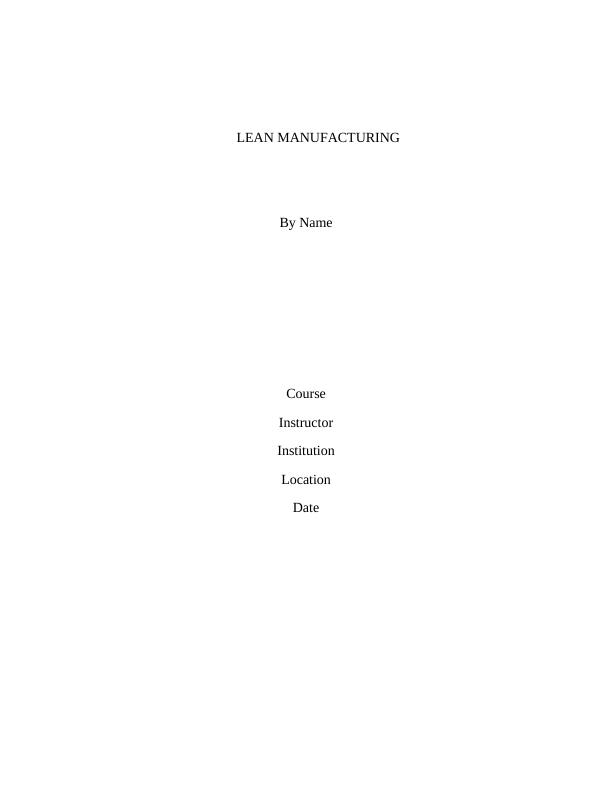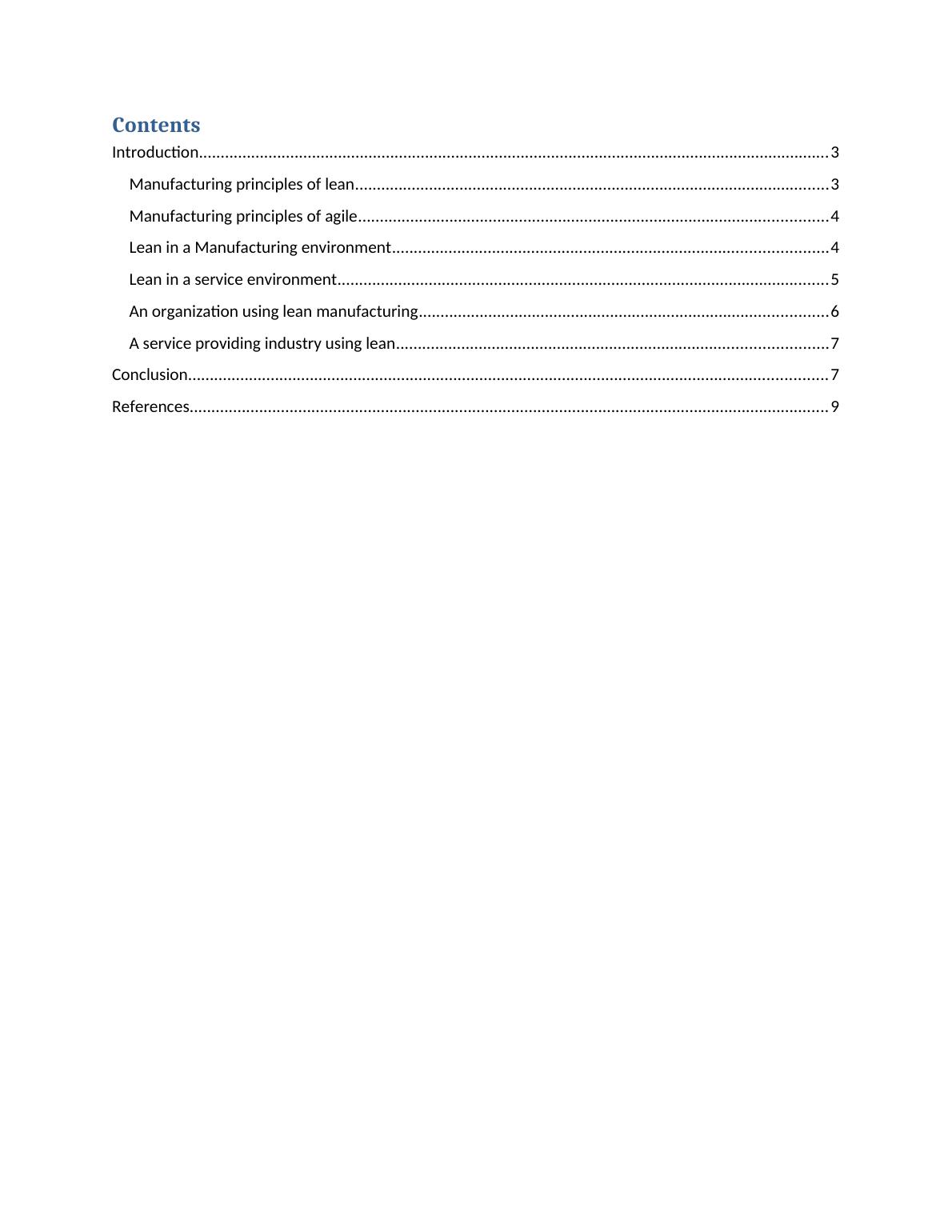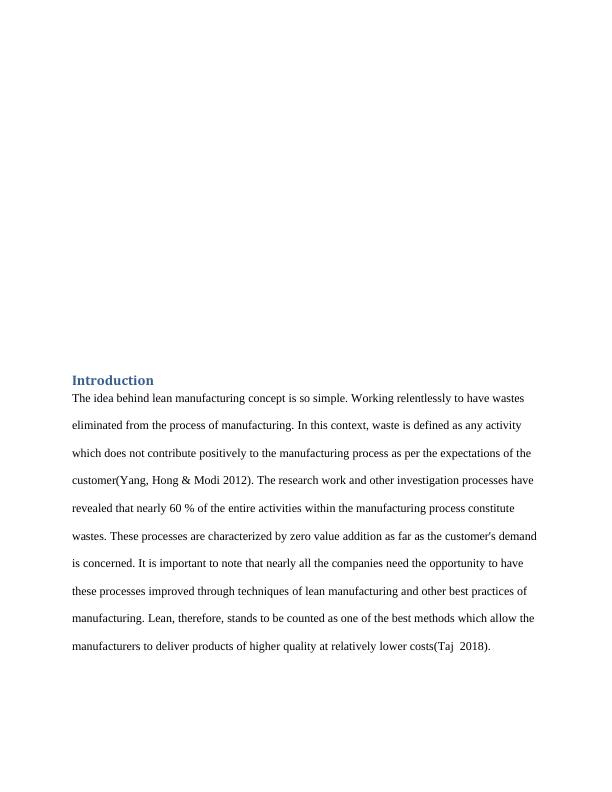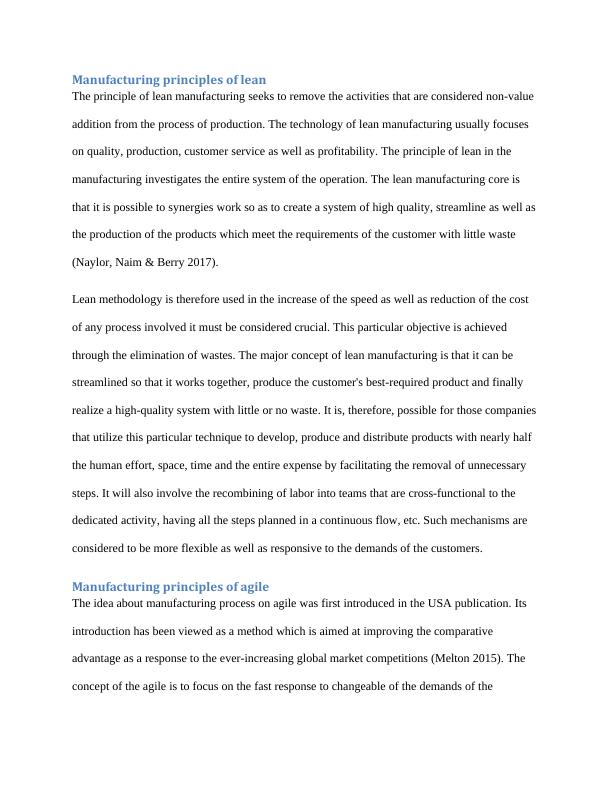Lean Manufacturing: Principles, Implementation, and Benefits
Evaluate the manufacturing principles of Agile and Lean, discuss their application in manufacturing and services sectors, and cite organizations as examples.
11 Pages2213 Words42 Views
Added on 2023-01-19
About This Document
This article provides an overview of lean manufacturing, including its principles, implementation in manufacturing and service environments, and the benefits it brings to organizations. It discusses the concept of waste elimination, the core principles of lean manufacturing, and how it can be applied in different industries. Case studies and research on lean manufacturing are also presented.
Lean Manufacturing: Principles, Implementation, and Benefits
Evaluate the manufacturing principles of Agile and Lean, discuss their application in manufacturing and services sectors, and cite organizations as examples.
Added on 2023-01-19
ShareRelated Documents
End of preview
Want to access all the pages? Upload your documents or become a member.
Agile Methods and Memo
|13
|2347
|302
Importance of Lean Project Management
|13
|3677
|30
The Operational Improvement Direction
|15
|4464
|135
Logistics Management - The Global Marketplace
|9
|1582
|28
Impact Of Lean Production Model
|6
|1201
|40
Lean Production: A Systematic Approach for Waste Reduction in Manufacturing
|5
|770
|100




